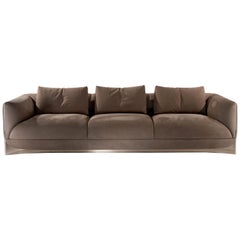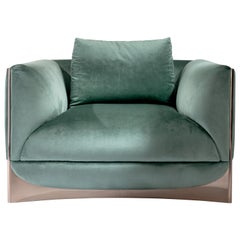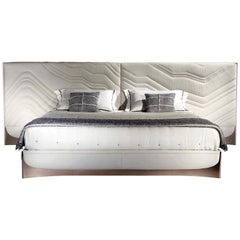Visionnaire Ca Foscari
21st Century and Contemporary Italian Modern Sofas
Leather
21st Century and Contemporary Italian Modern Armchairs
Fabric
21st Century and Contemporary Italian Modern Beds and Bed Frames
Leather
People Also Browsed
2010s Italian Modern Architectural Elements
Steel
21st Century and Contemporary Portuguese Mid-Century Modern Side Tables
Onyx, Marble, Carrara Marble, Brass, Stainless Steel, Gold Leaf
2010s Brazilian Modern Beds and Bed Frames
Fabric, Upholstery, Teak
2010s Uzbek Suzani Pillows and Throws
Silk
2010s Spanish Post-Modern Table Lamps
Alabaster, Brass
2010s American Modern Stools
Wood, Oak
Vintage 1930s Art Deco Cabinets
Wood
2010s Italian Mid-Century Modern Sofas
Leather, Wood
2010s American Mid-Century Modern Table Lamps
Brass
21st Century and Contemporary Portuguese Bedroom Sets
Brass
Mid-20th Century French Aubusson Tapestries
Wool, Cotton
2010s Colombian Wall Mirrors
Cast Stone
21st Century and Contemporary Portuguese Beds and Bed Frames
Brass
21st Century and Contemporary Indian Organic Modern Benches
Bronze
Antique 19th Century Irish Armchairs
Upholstery, Yew
21st Century and Contemporary Portuguese Modern Ottomans and Poufs
Velvet, Walnut, Alpaca, Mohair, Bouclé, Linen, Wood, Oak
Alessandro La Spada for sale on 1stDibs
Eccentric and anything but ordinary, Italian designer Alessandro La Spada creates seating, lighting fixtures, tables and other furnishings that are revered by architects and interior designers and coveted by collectors of luxurious and stylish 21st-century furniture.
Born to Sicilian parents in Reggio Calabria, La Spada grew up with a keen interest in art, drawing throughout his childhood. In later years, he moved to Milan to attend the Interior Design Institute and Ateneo Creativo (IDI’AC), graduating in 1990. After completing his studies, La Spada became a lecturer in furniture design at IDI’AC and the Domus Academy and collaborated with studio Sawaya and Moroni on a series of interior design projects.
When visiting Brianza, La Spada learned cabinetmaking and metalworking from the region’s master craftspeople. Upon his return to Milan, he used his newly acquired skills to create his first furniture collection, which he exhibited at the Salone del Mobile in 2000.
In 2005, La Spada met Samuele Mazza and the pair collaborated on designs for coffee tables and other furnishings for luxury brand Medea. Throughout the 2000s, La Spada also worked with several well-known Italian manufacturers, including Antolini, Besana, Longhi and Smania Industria Italiana Mobili. Among his most popular pieces are his elegant glass Jardin De Verre lighting fixtures for La Murrina. He created sculptural sofas, tables and armchairs for Visionnaire, with their stainless steel frames and lacquered wood that evokes sensuous ‘70s-era spaces, while his Girder dining room table with a crackle-glass top for Clan Milano exudes elegance in any space.
La Spada’s furniture has been featured in publications throughout Europe and around the world, such as Marie Claire Maison, Platform, Surface and more.
On 1stDibs, find a range of Alessandro La Spada lighting, tables and seating.
A Close Look at Modern Furniture
The late 19th and early 20th centuries saw sweeping social change and major scientific advances — both of which contributed to a new aesthetic: modernism. Rejecting the rigidity of Victorian artistic conventions, modernists sought a new means of expression. References to the natural world and ornate classical embellishments gave way to the sleek simplicity of the Machine Age. Architect Philip Johnson characterized the hallmarks of modernism as “machine-like simplicity, smoothness or surface [and] avoidance of ornament.”
Early practitioners of modernist design include the De Stijl (“The Style”) group, founded in the Netherlands in 1917, and the Bauhaus School, founded two years later in Germany.
Followers of both groups produced sleek, spare designs — many of which became icons of daily life in the 20th century. The modernists rejected both natural and historical references and relied primarily on industrial materials such as metal, glass, plywood, and, later, plastics. While Bauhaus principals Marcel Breuer and Ludwig Mies van der Rohe created furniture from mass-produced, chrome-plated steel, American visionaries like Charles and Ray Eames worked in materials as novel as molded plywood and fiberglass. Today, Breuer’s Wassily chair, Mies van der Rohe’s Barcelona chair — crafted with his romantic partner, designer Lilly Reich — and the Eames lounge chair are emblems of progressive design and vintage originals are prized cornerstones of collections.
It’s difficult to overstate the influence that modernism continues to wield over designers and architects — and equally difficult to overstate how revolutionary it was when it first appeared a century ago. But because modernist furniture designs are so simple, they can blend in seamlessly with just about any type of décor. Don’t overlook them.


